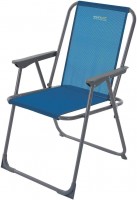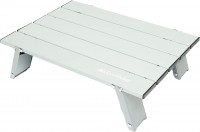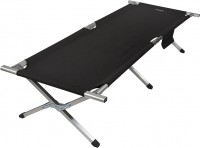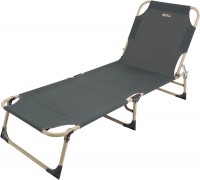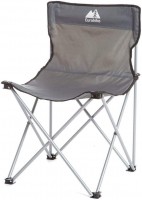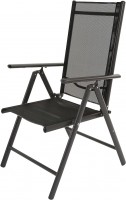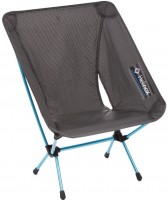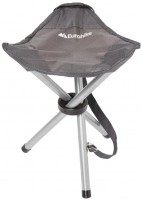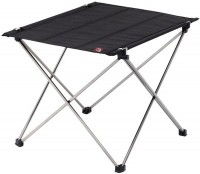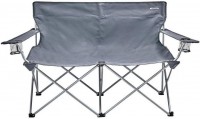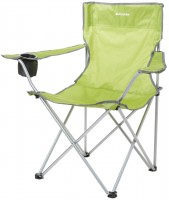Outdoor Furniture Outwell
All models Advanced filters → |
You might be interested in
Articles, reviews, useful tips
All materials
How to choose a tent for different usage scenarios?
Let's figure out how to choose tourist tents for a hike, camping or expedition

What to give dad?
Ideas for practical and useful gifts for father
Outdoor Furniture: specifications, types
Type
- Armchair. This category includes seating devices equipped with a backrest and armrests. In some models, the armrests can be solid, in others their role is played by the shape of the frame, and still others are often made in the form of a cocoon, enveloping the body of the crouched person.
— Double chair. A type of chair (see above) designed to accommodate two people. This presents them as a suitable solution for couples and friends wishing to enjoy a shared holiday.
- Chair. Variants of the chairs described above with missing armrests. Not so comfortable, since they can have a vertical back without tilting.
- Table. Classic tables are flat surfaces with legs, designed to provide convenience when preparing and eating food, preparing or repairing equipment, etc. Due to their folding design, tourist tables are not as durable as regular home tables and are not designed to withstand significant loads - however, they are reliable enough to cope with most of the tasks assigned to such furniture when traveling outdoors. Most of these products have a working height of about 70 cm, which provides easy access to the tabletop from both a standing and a sitting position.
— Stool. The simplest piece of furniture designed for sitting is a small platform on a stand (legs). In...tourist stools, the seating surface is often made of soft material, and acquires the necessary rigidity due to tension when unfolding; however, there are exceptions, with hard seats. In any case, this type of furniture differs from the chairs described above in the absence of a backrest. This, on the one hand, makes sitting on a stool less comfortable, on the other hand, it has a positive effect on the weight, dimensions, simplicity and cost of the design, and also provides some additional capabilities. For example, a stool can be used as a stand for a large object (a log, a box of equipment, etc.), whereas in the case of a chair the backrest would interfere with this.
- Fishing chair. Specialized chairs designed, as the name suggests, primarily for fishermen. Fishing products differ from “ordinary” chairs (see above) in their more advanced design, designed to provide the fisherman with maximum comfort. This design typically includes thick, soft seat and back materials, often with adjustable backrest and legs; There may also be shelves-stands, mounts for fishing rods, etc. Thanks to all this, fishing chairs are extremely comfortable and are perfect for those who sit “over fishing rods” for hours, however, such models are very expensive.
— Chaise longue. This type includes structures that provide exclusively for the lying or semi-lying position of the person in them. This differs from chairs with footrests (see above), which may look similar to chaise lounges, but have a relatively slight backrest angle. In addition, sun loungers are intended mainly for passive relaxation - for example, sunbathing or taking a short nap; and some of them can even be transformed into full-fledged beds.
- Kangaroo chair. In design, kangaroo chairs can be similar to both chairs themselves and stools (see above) - in other words, they can be either with or without a backrest. A distinctive feature of such furniture is the presence of a bag (pocket), which, when unfolded, is located in the lower part - under the seat or on the side of the chair legs. This bag allows you to keep various useful items at hand, which can be useful, for example, on a short fishing trip, for which you do not need a specialized chair.
- Folding bed. Classic folding beds designed for sleeping and relaxing in a lying position, usually for one person. In some models, the sleeping surface is flat, as in regular beds; in others, part of the structure on the side of the head can be raised - for example, if the pillow is too low, or when using a folding bed as an impromptu chaise lounge. In any case, folding beds are useful not only on camping trips, but also for organizing additional sleeping places in ordinary living quarters.
- Bench. Tourist benches, like regular ones, have an elongated shape, which allows several people to sit on such furniture at the same time.
- Kitchen table. Tables intended for food preparation. As a rule, in addition to the main tabletop, such products have many additional surfaces - shelves, cabinets, etc. In addition, many kitchen tables are equipped with wind screens and/or special stands that allow you to conveniently use camp gas stoves.
— Transformable table. Folding tables that combine a tabletop and seating in one package (usually stools for four people). They are made in the form of a single non-separable structure connected by movable fasteners. When folded, such tourist furniture takes up minimal space, making transformable tables easy to transport when traveling outdoors.
- Kit. As the name suggests, in this case we are talking about sets that include several pieces of furniture. The most popular option for such a set is a table in combination with several stools(also, as an option, a table with chairs or a table with benches). However, other sets may also be provided, so in any case it would not hurt to check the package separately. Such solutions are very convenient because they allow you to buy all the necessary tourist furniture “in one fell swoop” - it’s easier than purchasing a table, stools, benches, etc. separately. The disadvantage is that the list of items and their characteristics do not always correspond to the buyer’s needs, and the sets are supplied “as is” and do not imply the possibility of changing the configuration to order.
— Double chair. A type of chair (see above) designed to accommodate two people. This presents them as a suitable solution for couples and friends wishing to enjoy a shared holiday.
- Chair. Variants of the chairs described above with missing armrests. Not so comfortable, since they can have a vertical back without tilting.
- Table. Classic tables are flat surfaces with legs, designed to provide convenience when preparing and eating food, preparing or repairing equipment, etc. Due to their folding design, tourist tables are not as durable as regular home tables and are not designed to withstand significant loads - however, they are reliable enough to cope with most of the tasks assigned to such furniture when traveling outdoors. Most of these products have a working height of about 70 cm, which provides easy access to the tabletop from both a standing and a sitting position.
— Stool. The simplest piece of furniture designed for sitting is a small platform on a stand (legs). In...tourist stools, the seating surface is often made of soft material, and acquires the necessary rigidity due to tension when unfolding; however, there are exceptions, with hard seats. In any case, this type of furniture differs from the chairs described above in the absence of a backrest. This, on the one hand, makes sitting on a stool less comfortable, on the other hand, it has a positive effect on the weight, dimensions, simplicity and cost of the design, and also provides some additional capabilities. For example, a stool can be used as a stand for a large object (a log, a box of equipment, etc.), whereas in the case of a chair the backrest would interfere with this.
- Fishing chair. Specialized chairs designed, as the name suggests, primarily for fishermen. Fishing products differ from “ordinary” chairs (see above) in their more advanced design, designed to provide the fisherman with maximum comfort. This design typically includes thick, soft seat and back materials, often with adjustable backrest and legs; There may also be shelves-stands, mounts for fishing rods, etc. Thanks to all this, fishing chairs are extremely comfortable and are perfect for those who sit “over fishing rods” for hours, however, such models are very expensive.
— Chaise longue. This type includes structures that provide exclusively for the lying or semi-lying position of the person in them. This differs from chairs with footrests (see above), which may look similar to chaise lounges, but have a relatively slight backrest angle. In addition, sun loungers are intended mainly for passive relaxation - for example, sunbathing or taking a short nap; and some of them can even be transformed into full-fledged beds.
- Kangaroo chair. In design, kangaroo chairs can be similar to both chairs themselves and stools (see above) - in other words, they can be either with or without a backrest. A distinctive feature of such furniture is the presence of a bag (pocket), which, when unfolded, is located in the lower part - under the seat or on the side of the chair legs. This bag allows you to keep various useful items at hand, which can be useful, for example, on a short fishing trip, for which you do not need a specialized chair.
- Folding bed. Classic folding beds designed for sleeping and relaxing in a lying position, usually for one person. In some models, the sleeping surface is flat, as in regular beds; in others, part of the structure on the side of the head can be raised - for example, if the pillow is too low, or when using a folding bed as an impromptu chaise lounge. In any case, folding beds are useful not only on camping trips, but also for organizing additional sleeping places in ordinary living quarters.
- Bench. Tourist benches, like regular ones, have an elongated shape, which allows several people to sit on such furniture at the same time.
- Kitchen table. Tables intended for food preparation. As a rule, in addition to the main tabletop, such products have many additional surfaces - shelves, cabinets, etc. In addition, many kitchen tables are equipped with wind screens and/or special stands that allow you to conveniently use camp gas stoves.
— Transformable table. Folding tables that combine a tabletop and seating in one package (usually stools for four people). They are made in the form of a single non-separable structure connected by movable fasteners. When folded, such tourist furniture takes up minimal space, making transformable tables easy to transport when traveling outdoors.
- Kit. As the name suggests, in this case we are talking about sets that include several pieces of furniture. The most popular option for such a set is a table in combination with several stools(also, as an option, a table with chairs or a table with benches). However, other sets may also be provided, so in any case it would not hurt to check the package separately. Such solutions are very convenient because they allow you to buy all the necessary tourist furniture “in one fell swoop” - it’s easier than purchasing a table, stools, benches, etc. separately. The disadvantage is that the list of items and their characteristics do not always correspond to the buyer’s needs, and the sets are supplied “as is” and do not imply the possibility of changing the configuration to order.
Maximum load
The greatest weight that a piece of furniture can withstand without consequences during normal use for its main purpose; in other words, the maximum load at which the structure can operate for a long time (at least the warranty period) without damage or other problems. Of course, this figure cannot be exceeded: although exceeding the load does not necessarily lead to immediate breakage of the furniture, high weight still negatively affects the strength of the structure, and the product may break at the most unexpected moment (including later, when operating under normal load) . It is also undesirable to select a model based on end-to-end load. This is especially true for chairs, stools and other “seated places” (see “Purpose”): with any movement of a sitting person, additional loads arise on the structure, as a result, the actual load may be higher than the maximum even with the permissible weight of the seated person. The best option is to have a weight reserve of at least 15 - 20%. Of course, high strength affects either the cost or the weight of the product - however, in the case of tourist furniture, reliability is often more important than price or difficulty in transportation (especially since most such products are intended for camping and are not intended for long-term carrying).
Note that for tables (see “Purpose”) the load is usually low - no more than 30 kg: this is quite enough for most cases, and the weight of the str...ucture is small. But chairs and other “sitting” furniture should be designed for more serious loads - from 70 kg and above. If we are talking about a set, then manufacturers, as a rule, indicate indicators for each type of item included in the set. However, there are exceptions; in these cases, it is recommended to check load indicators with company representatives or other reliable sources.
Note that for tables (see “Purpose”) the load is usually low - no more than 30 kg: this is quite enough for most cases, and the weight of the str...ucture is small. But chairs and other “sitting” furniture should be designed for more serious loads - from 70 kg and above. If we are talking about a set, then manufacturers, as a rule, indicate indicators for each type of item included in the set. However, there are exceptions; in these cases, it is recommended to check load indicators with company representatives or other reliable sources.
Frame material
— Aluminium. Aluminium alloys combine light weight with strength, durability and corrosion resistance, making them a highly suitable option for outdoor gear including furniture. However such frames cost a little more than steel frames (see below).
— Steel. Steel is highly durable, while not as expensive as aluminium described above. On the other hand, this material has a greater weight, so steel furniture is recommended mainly for outdoor trips by car, as well as for "dacha" use — in house areas where the structure does not have to be worn more than a few metres.
— Tree. Wood belongs to the classic materials, has an aesthetic appearance, which allows you to create original-looking pieces of furniture; in addition, it is considered by some to be more pleasant to the touch and "greener" than steel or aluminium. On the other hand, at a rather high cost, this material has no practical advantages over metals; moreover, under heavy loads, when the metal bends, the tree, usually, cracks. Therefore, wooden frames have not received much distribution in tourist furniture.
— Steel. Steel is highly durable, while not as expensive as aluminium described above. On the other hand, this material has a greater weight, so steel furniture is recommended mainly for outdoor trips by car, as well as for "dacha" use — in house areas where the structure does not have to be worn more than a few metres.
— Tree. Wood belongs to the classic materials, has an aesthetic appearance, which allows you to create original-looking pieces of furniture; in addition, it is considered by some to be more pleasant to the touch and "greener" than steel or aluminium. On the other hand, at a rather high cost, this material has no practical advantages over metals; moreover, under heavy loads, when the metal bends, the tree, usually, cracks. Therefore, wooden frames have not received much distribution in tourist furniture.
Adjustable backrest
The presence of an adjustable backrest in the design of a piece of furniture. Most often, the adjustment concerns the tilt, but there may be other options — for example, if the size of the backrest is small, it can be made adjustable in height. Anyway, this feature provides additional comfort, allowing you to more accurately adjust the chair to your own preferences. And in some models, backrest adjustment may also be responsible for additional applications — for example, in sun loungers, where transformation into a bed is provided by setting the backrest in a horizontal position.
Legs length adjustment
The ability to change the length of the legs of the product. Usually, in modern tourist furniture, the length of each leg is regulated separately. This is due to the main purpose of this function — adjusting the structure to the relief of the surface on which it is installed: by adjusting the length of the legs for individual irregularities, you can achieve an even and stable position even on very “difficult” terrain (like a pebble beach). And in tables (see "Intended use"), the leg length adjustment can also be used to change the height of the tabletop.
Canopy
Canopies are used primarily in cots, sun loungers and chairs/armchairs (see "Intended Use"). They are small in size, placed in the head area and are intended mainly for protection from direct sunlight.
Umbrella installation
The function is primarily relevant for tables and sets of tables with chairs. It allows you to additionally attach an umbrella to the table so that you can continue your meal even during rainfall. For this, a hole is provided in the middle of the table, through which the umbrella is mounted. However, it is worth considering that the diameter of this hole may vary. Accordingly, the base (tube) of the umbrella must be compatible: not be thicker, because it will not fit, not be too narrow, because will wobble.
Armrests
The design of the product includes armrests - characteristic handles located on the sides of the seat, on which you can rest your elbows and forearms. This reduces fatigue in the neck and shoulder area when sitting. At the same time, the armrests do not allow you to sit sideways and can create some inconvenience if you need to often get up from your seat. However, these shortcomings can hardly be called critical. Armrests are found mainly among armchairs and chaise lounges (see “Type”). But conventional chairs belong to the category of tourist furniture without armrests.
Headrest
The headrest in this case is a characteristic soft “pillow” located in the area of the back of the head of the seated person and providing additional comfort when sitting. Thus, this feature implies not only the presence of a backrest, but also a rather large height of this backrest — so that the headrest can be fixed high enough. There is similar equipment in all types of tourist furniture equipped with backs — chairs, armchairs (including for fishing) and sun loungers (see "Purpose").
Shelf-stand
Shelf-stand is found mainly in chairs and armchairs (see appointment). It looks like a small horizontal surface located in the area of the armrest — in such a way that the seated person can reach it without much effort. On the shelf-stand you can put, for example, a thermos with tea or coffee, put a mobile phone or notepad, etc. Anyway, this detail provides additional comfort, allowing you to always keep the necessary items at hand, but at the same time, it increases the weight and cost of the product.
Cup holder
The coaster is a characteristic round recess, designed, in accordance with the name, to place a glass with a drink. However, the matter is not limited to this, and such equipment can be used in other ways — from installing thermal mugs or bottles in cup holders to using it as an impromptu holder for a mobile phone, monocular, etc. The design of the cup holder can be different: in some models it is just a round hole, in others it is supplemented with a fabric bag, in others a shallow bowl is used, supplemented by a pair of straps to hold the vessel installed inside. And the cup holder can be placed on the armrest, on the shelf-stand (see above), on the side of the seat as a separate device, etc.
The pocket can be useful in cases where the user constantly needs to keep certain small items at hand. In this sense, its role is similar to that of a shelf-stand (see above). The difference is that the contents of the pocket are hidden from view and can be more difficult to reach, but they are much better protected from dust, precipitation, etc. In addition, if an object can be accidentally brushed off a shelf, then with a pocket the probability of such an incident is almost zero.
Fastening for rod
Such equipment is designed primarily for those fishermen who have to sit for a long time, holding the rods motionless — in particular, with classic float fishing. Holding a rod in your hand for a long time is a rather tiring task, so a stand can come in handy. In addition, it can come in handy in the event that the fisherman needs to be distracted or absent for a while. However such equipment significantly complicates the design, and therefore is found mainly in specialized chairs(see "Purpose") of the premium class.
Footrest
The footrest, as the name suggests, provides extra support for the occupant's legs and provides comfort. On the other hand, this function, like any additional equipment, significantly affects the dimensions, weight and cost of the product. Footboards are found mainly in chairs and armchairs (see "Purpose"), with the exception of fishing ones — sometimes you have to get up quickly during fishing, and the footboard can interfere with this. Also note that most deck chairs (see ibid) provide support for the legs by default, so the presence of a footrest is not indicated separately (in fact, this role is played by part of the standard design).
Case
The case greatly simplifies the transportation and storage of the product. Its main function is to protect both the piece of furniture itself (from various adverse effects) and surrounding objects (from unwanted contacts with the contents of the cover). In addition, the case, usually, is designed to accommodate all the items included in the package — this minimizes the risk of losing any of these items. This is especially true for sets(see "Purpose") — it is often much more convenient to store, carry and carry all the furniture in one case than separately, since the weight of even extensive sets is relatively small. Of course, in the absence of a cover, you can purchase it separately or even make it yourself; however, complete accessories, firstly, by definition, are optimally suited for “native” furniture, and secondly, they are more convenient and easy to purchase.
Carrying strap
This feature greatly facilitates the transportation of furniture: even holding a belt in your hands is often more convenient than the piece of furniture itself, and in some models the belts allow you to hang the load on your shoulder or behind your back, freeing your hands. The belt can be located both on the product itself and on the complete case.
Weight
The total weight of a piece of furniture. This parameter has a dual meaning. On the one hand, a lot of weight creates inconvenience in carrying, and such products are poorly suited for transportation over long distances. On the other hand, more massive structures are more stable, and when using the same materials, usually, they are also more durable than light ones.
Weight, usually, is indicated without taking into account the cover (see above) — this is quite justified, given that the covers are usually made of soft and light materials and their effect on the weight of the furniture itself is almost imperceptible.
Weight, usually, is indicated without taking into account the cover (see above) — this is quite justified, given that the covers are usually made of soft and light materials and their effect on the weight of the furniture itself is almost imperceptible.


